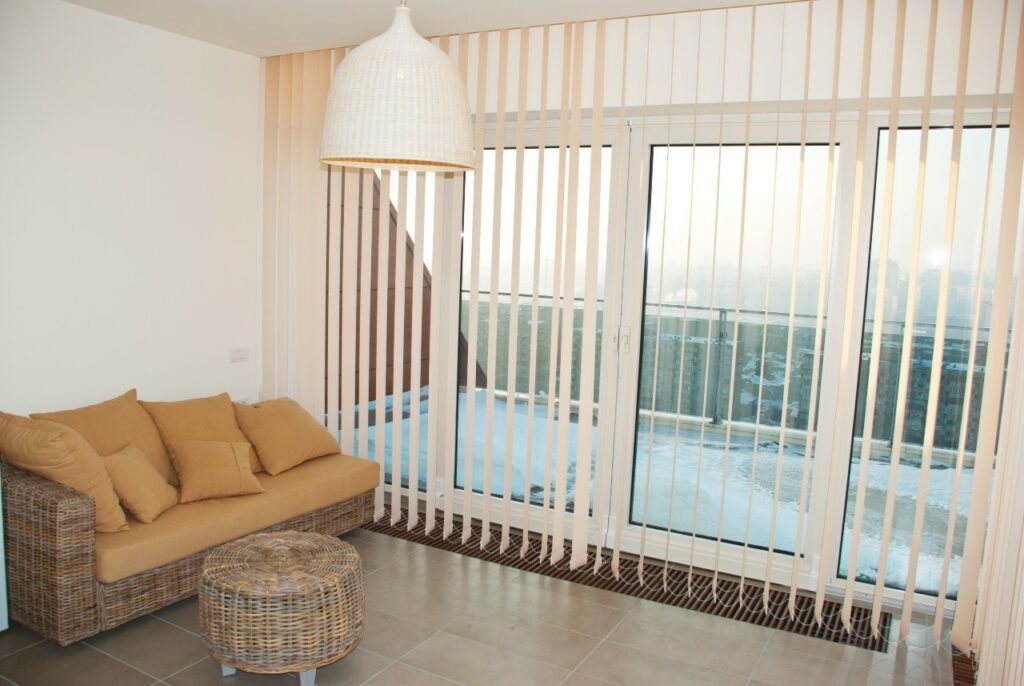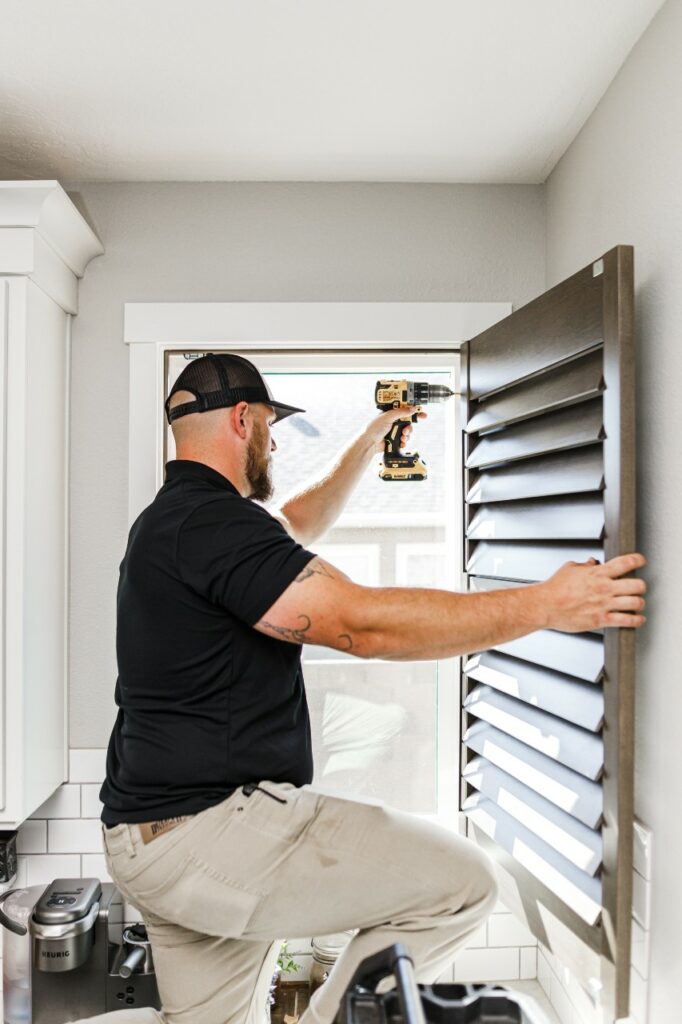Whether you are picking out blinds for a new home or replacing your existing window coverings, the sheer quantity and variety of blind options may feel overwhelming. To help you narrow down your choices, we recommend settling on a blind type, vertical blinds or horizontal blinds, before anything else. Here we discuss the functionality behind each type of blind and their unique pros and cons to aid you in determining the blind best suited for your home.
The Functionality of Vertical Blinds & Horizontal Blinds
Before we jump into determining which blind style is best suited for your home, let’s quickly go over the primary terminology. As the same suggests, vertical blinds consist of vertical slates or vanes that run up and down. Functionally, vertical blinds slide sideways, following a track installed at the top of an opening, such as a window trim or a door frame.
Alternatively, horizontal blinds are oriented left to right, almost like a staircase. Horizontal blinds do not slide but lift. They are usually powered by a cord-and-pully system, by the lift of a hand, or a remote control can raise newer models.
Vertical Blinds vs. Horizontal Blinds – Pros & Cons of Each

Compatibility & Sizing of the Window Coverings
Prior to any other considerations in preferences or aesthetics, it is vital to consider compatibility and sizing. Not all blinds work for every type of opening. The dimensions and mechanisms of your window or door may rule out certain kinds of blinds right off the bat.
Horizontal blinds are usually preferred for smaller windows since they open in an up-and-down motion that relies on the strength of the user. Users can easily reach the window covering, lift the weight of the blind, and still be able to open the window accordingly. If the window gets too large, horizontal blinds would become too heavy and impossible to lift manually.
On the flip side, vertical blinds are designed for larger windows, such as bay windows, as well as sliding glass or sunroom doors. The vertical slats are long and touch the floor, but they are easy to slide to the side so you can see outside or access a sliding door.
Keeping Your Home Private
One of the key aspects of installing blinds is the level of privacy they provide you with; no one wants a nosy neighbor or random passerby to look into their home or see their family. For the utmost privacy, horizontal blinds provide tighter coverage, whereas vertical blinds have small gaps that could allow some to see through at just the right angle. Therefore, you will want horizontal blinds in rooms where privacy is your main concern, such as bedrooms and bathrooms.
Cleaning and Maintenance Levels
To keep your window coverings in good shape for many years, they will need regular cleaning and maintenance. Vertical blinds are considered the easier of the two to clean. However, since vertical blinds often slide on an overhead track, they are easier to break and typically require more maintenance. For those with children or large pets in the house, we recommend cordless horizontal blinds. These blinds are less likely to become damaged from children playing and don’t have cords they can accidentally get wrapped up in. Overall, it is the safer option that will also save you money down the line.

Light Control & Energy Efficiency
Did you know that vertical blinds are typically used on windows facing east or west, whereas horizontal blinds are used for north or south windows? This is due to the fact that vertical blinds provide greater light control, perfect for managing the sun’s glaring rays at sunrise and sunset. We recommend analyzing the direction the majority of the windows face in your home and choosing the blind that best fits your directional needs.
Greater light control and the ability to block the sun’s hot beams also increase energy efficiency. Rather than running up your utility bills to control your home’s temperature, you can utilize your blinds to let heat in or keep it out. Vertical blinds are the more energy-efficient options as their slats provide a more sufficient barrier.
Design Preferences & Existing Aesthetic
In addition to all the functionality points of the window covering listed thus far, it is essential to consider the aesthetic. While new homes’ blind design will rely heavily on the architecture and base amenities of the new building, lived-in homes must also consider the existing design curated by the homeowners, such as color palettes, patterns, spatial organization, and other elements. You want your blinds to compliment your design rather than stick out like a sore thumb.
For example, vertical fabric blinds can add a softness to a room while bringing in a complimenting color. Alternatively, modern home design may benefit more from the crisp, cool design of a roller shade horizontal blind.

The Blind Guy – Your Local Blind Expert
Blind installation typically goes beyond the skill set of an average homeowner. That’s where we come in. At The Blind Guy, we have a team of experienced designers and installers ready and excited to help you determine which blind will best suit your home in terms of functionality, aesthetics, and personal preferences. Our streamlined installation process provides homeowners with a safe, comfortable, and beautiful home they will love for years to come.
The Blind Guy offers our service to the Tri-Cities and the surrounding Washington areas. Please give us a call or use our contact form for any questions you may have or to schedule your in-house estimate and installation appointment.